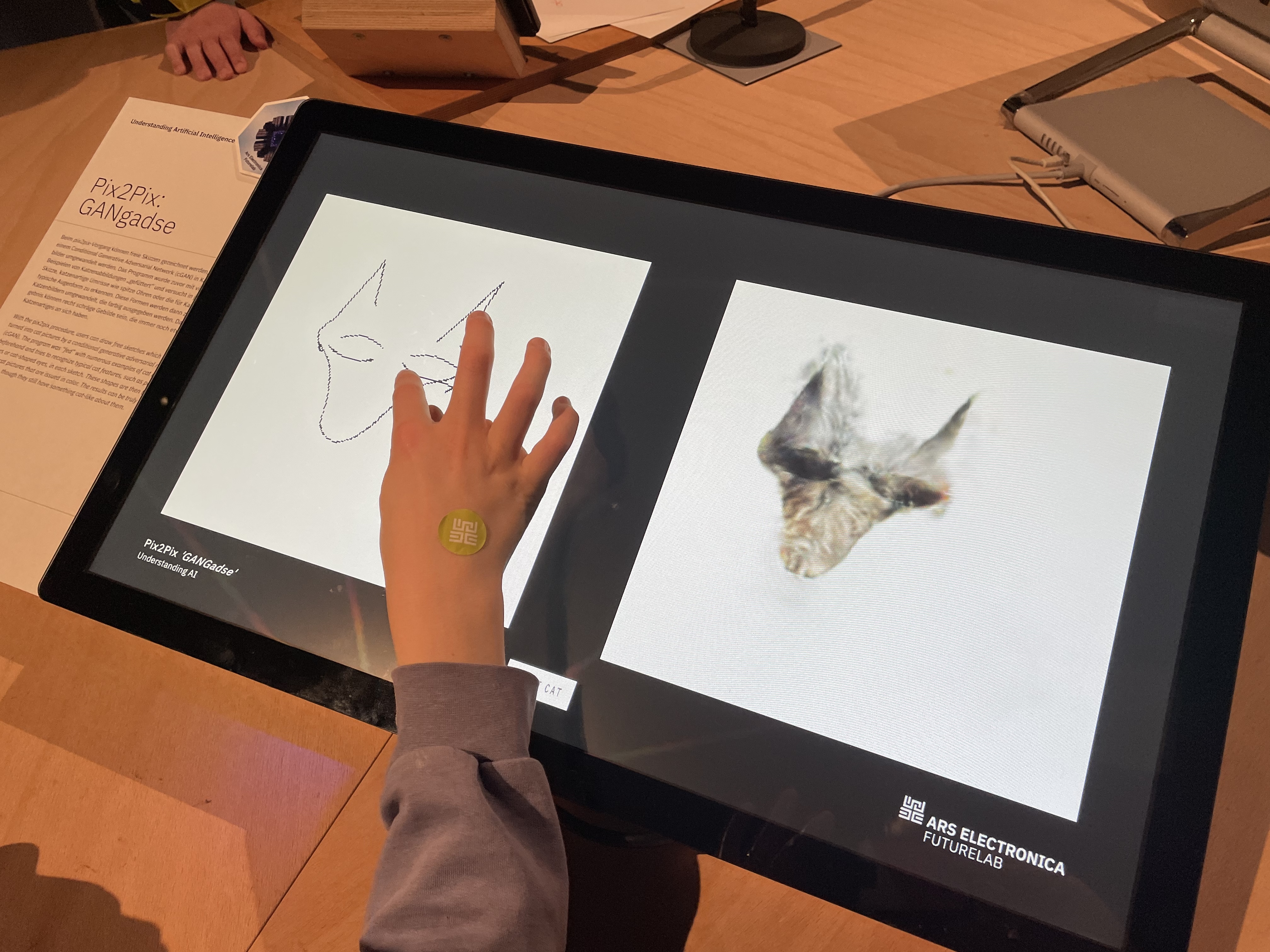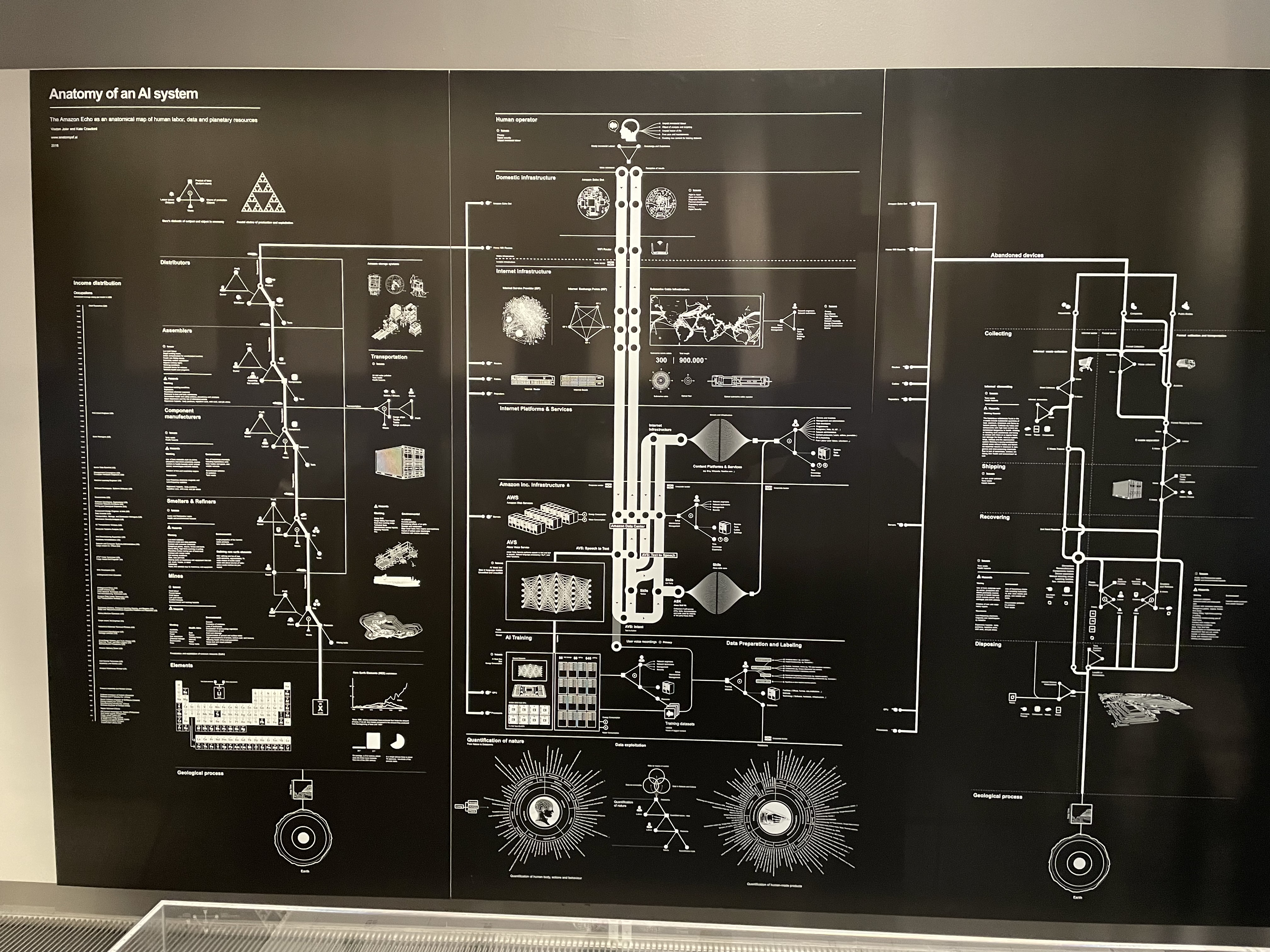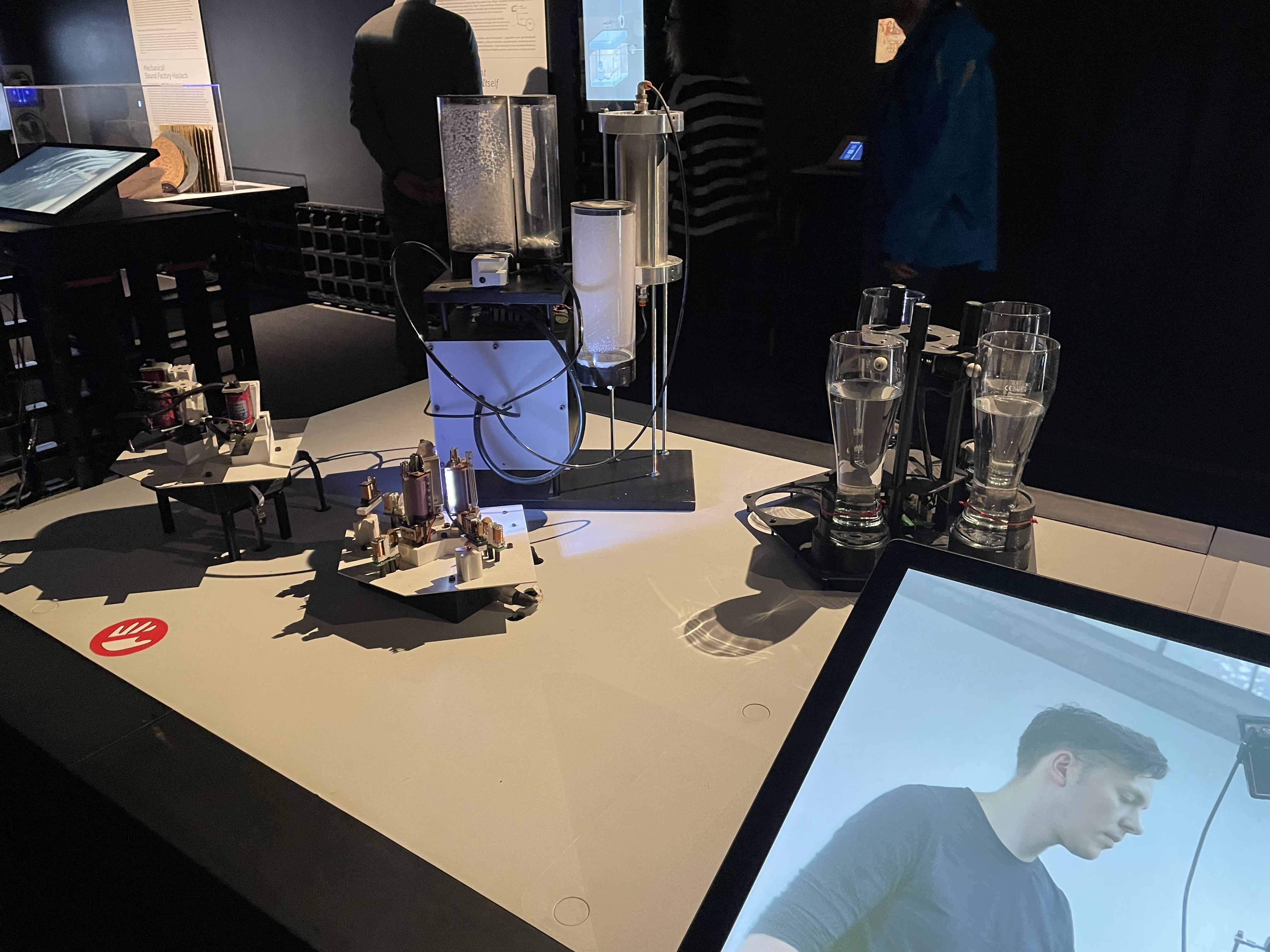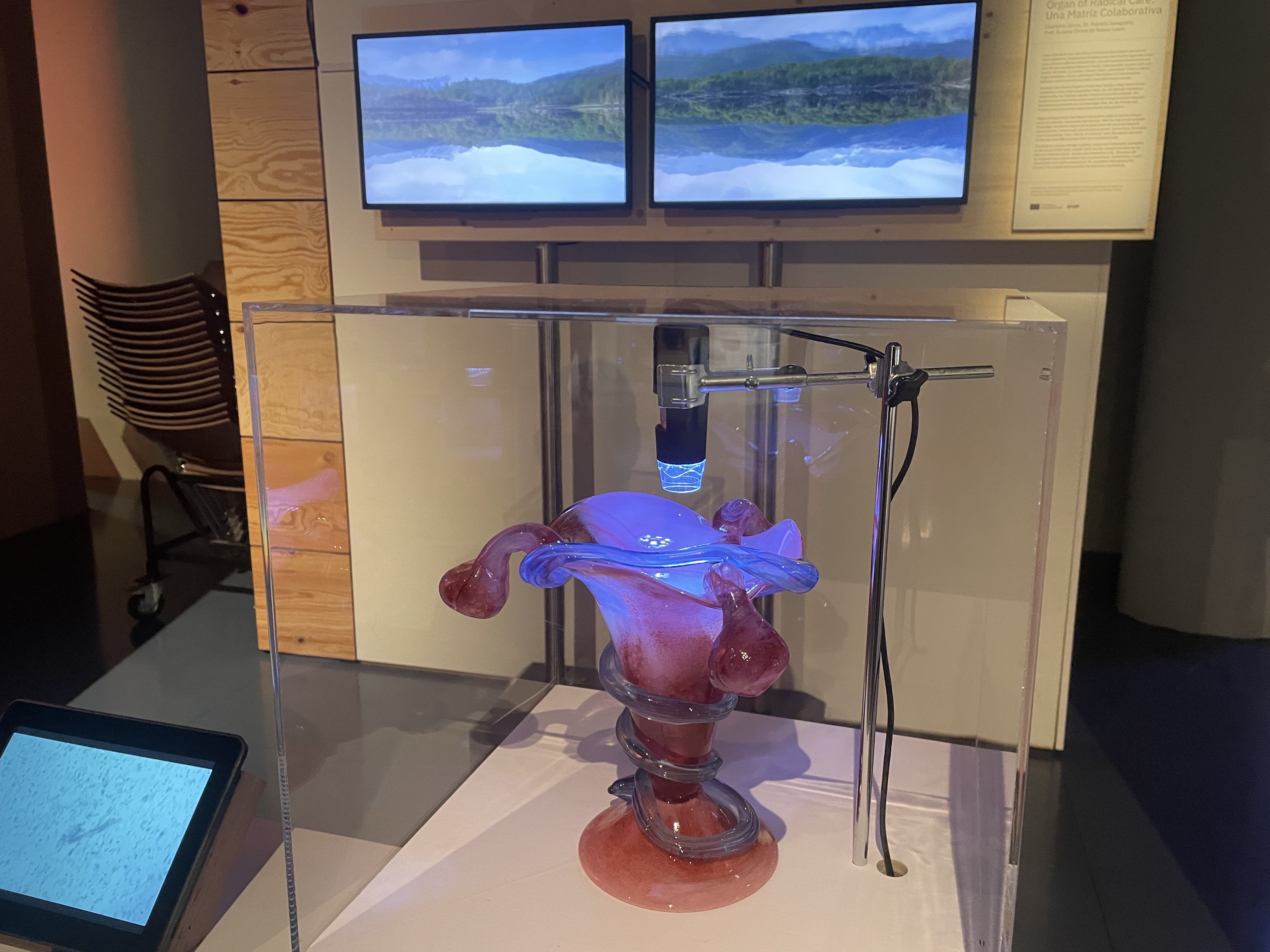A visit to the Ars Electronica Center
I was in university at the start of the millenium when I first heard about electronic arts, and about the Ars Electronica Festival in Linz, Austria. Launched in 1979, this event has been a cornerstone of the digital arts scene.
Only recently did I realize that in addition to the festival, there’s also a permanent center. And at about two hours by direct train, it’s an easy day trip from our place. So I had to go, and the most technophile kid came with me. The place’s kid-friendly reputation seems to have spread: on a grey Saturday in February, the place was full of families with children of all ages. It never felt crowded, though.
The exhibitions cover similar themes to what you’d expect at a decent hacker / internet conference, such as climate change, AI and music. The Ars Electronica Labs section has slightly more far-out stuff, which I found extra interesting. A lot of the exhibits are interactive, so it never gets boring. Many of them have guides who are very knowledgeable and not just friendly, but excited about the things they’re showing.
Starting with a bang#
Right by the entrance is the Deep Space 8K. It’s cinema-sized room where they’re showing amazing animations in 3D and extremely high resolution. We had an abstract visual sculpture, a flying carpet, a POV race down Austria’s most demanding ski slope, and a trip to outer space. Lots of fun!
AI made approachable#
The bottom floor of the center (located underneath the Danube river, natch) is dedicated to artifical intelligence. They do a really good job of presenting the topic so that it’s approachable to normies, but still interesting to people who know a bit about AI.
Several exhibits let you experience what generative adversarial networks (GANs) can do. One GAN has been trained on cat pictures (of course). 
In a neighbouring exhibit, you move in front of a camera, and a GAN transforms your picture into a mountain landscape. A few steps on, you can try your hand at puppeteering: An industrial robot holds a puppet, and you get a smartphone that lets you control the robot.
There’s also a massive infographic (three by five meters maybe?) showing the “anatomy of an AI system”: Where the metals come from, who gets paid what, from people classifying content in the Philippines to chief executives in the US, and everyone in between. It’s a great visualization of the connections, dependencies and exploitative relationships that make modern computing possible. 
Oh, and on the way down, you can try on an exoskeleton. The kid loved it! Those things are actually being used in factories and logistics today, and you can totally buy them for a few thousand euros.
Making music with machines#
The 2nd floor has an exhibition dedicated to electronic music, starting with the first known musical automata in ancient Greece, right down to singing AIs and techno made by robots. 
There’s a music lab space where you can try your hand at making music with computers and a sequencer hooked up to robots that play various percussion instruments. The 9th century “Book of Inventions” by the Banu Musa brothers from Baghdad is something I’ll definitely have to look up. In a climate-controlled room, a precision-automated Boesendorfer plays classical music composed by an AI system.
Plant leather, mycelia and a collective uterus#
The Ars Electronica Labs hold a small maker space, with 3D scanners and printers as well as a laser cutter. If you’ve booked one of the group workshops the center offers, you can make a prosthetic limb here!
But why stop there, when you can 3D print honeycomb-like structures with clay, and then fill in the spaces with growing mycelium to make building elements without cement? 
Lots of artists and researchers are looking into creating new textile and leather-like materials, on a spectrum between art and industrial applicability. There’s a whole wall on different folding techniques, and what you can achieve with them.
The piece that I personally found the most touching was Organ of Radical Care: Una Matriz Colaborativa. In a specially blown glass vessel, the artists are “grow and nurture a collaborative uterus from menstrual blood of multiple women, trans, queer and non binary people”. It’s quite extraordinary.  (For US readers: no, it’s not censored in any way, it’s just sitting there in the middle of the exhibition room. My kid asked what it was, I explained, and that was that. Everyone survived unscathed.)
(For US readers: no, it’s not censored in any way, it’s just sitting there in the middle of the exhibition room. My kid asked what it was, I explained, and that was that. Everyone survived unscathed.)
Should you go?#
Of course you should. If you’ve ended up reading all this, then the Ars Electronica Center is probably up your alley. I’ve been around the internet block a couple of times, seen some good stuff, and this is among the best I’ve encountered.
It’s an easy day trip from Vienna or Munich by train. Unless you’re a compulsive completist, one day is probably sufficient to see everything you want to see. We got there just before 11:00, and by 16:30 we’d taken in most of the place, and the kid’s head was full (mine, too).
Practicalities#
The center is open all year round, it’s kid friendly, and barrier free if you’re a wheelchair user.
For small kids (perhaps 3 and up?) there’s a dedicated lab space with lots of neat stuff. Older kids and teenagers will be happy with the general exhibits.
It’s super easy to reach by public transport. Take the train to Linz Hbf, a major stop on the line from Vienna to Munich. Both OEBB and Westbahn run frequent long-distance services. It’s worthwhile comparing ticket prices for your specific situation.
From there, tram lines 1-4 will take you to Rudolfstrasse (about 15 minutes, ticket machines at the station). I’d recommend getting off one stop earlier, at Hauptplatz in the historic center, and taking a short scenic walk of about 500m across the Danube.
For lunch, I would happily return for a great spicy Chinese meal at Szechuan Impressions just off Hauptplatz. Not cheap, but given how hard it is to find reasonably authentic Chinese food in Austria or Germany, this is a great opportunity to treat yourself.
Have fun!
PS: Don’t confuse Linz with Lienz. That’s a different city elsewhere in Austria, surely enjoyable in its own way, but AFAIK there’s no museum dedicated to the electronic arts there.